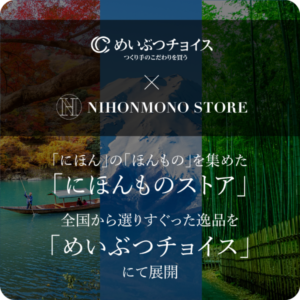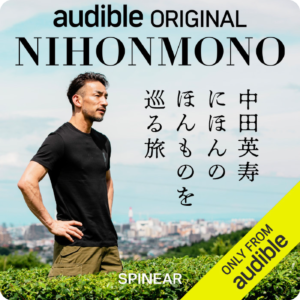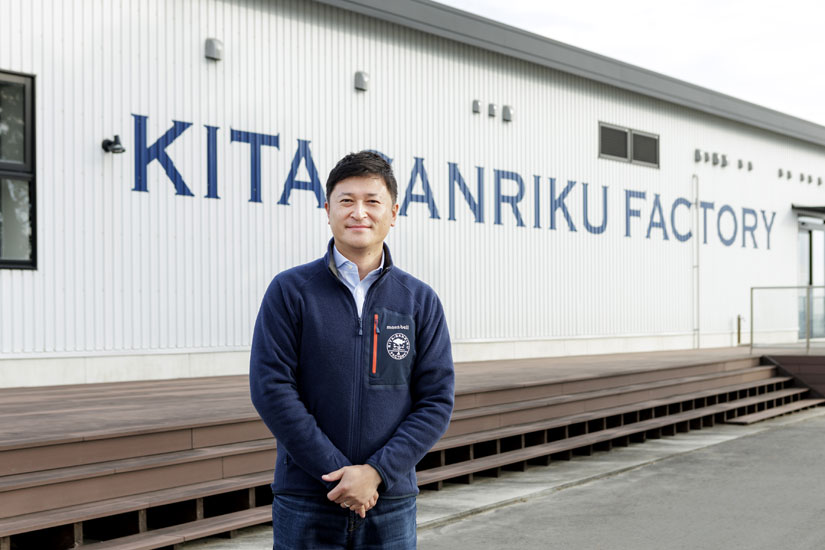Iwate Prefecture ranks second in Japan in terms of sea urchin landings. Among these, Taneichi in Hirono Town is the largest sea urchin catch area in Japan. Kitasanriku Factory, a company that processes and sells sea urchins in Taneichi, is promoting the branding of the town’s wild sea urchins, and is also engaged in “regenerative aquaculture” of sea urchins that have been affected by “iso-yaki,” or rocky seas and are therefore not filling up properly.
Facing the open sea, natural seafood is abundant.
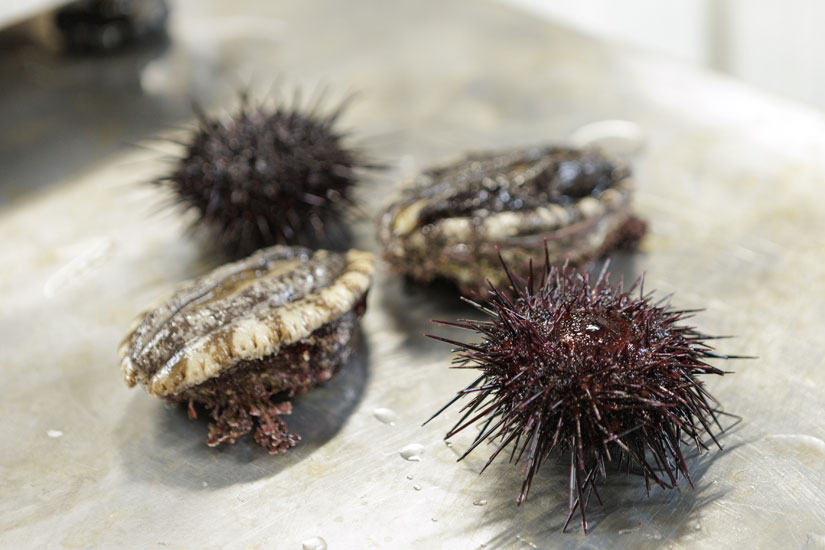
Located at the northernmost tip of the coast of Iwate Prefecture, the town of Yono faces the open sea without a bay, which is unusual for a town on the Sanriku coast. While exposure to rough seas makes it unsuitable for aquaculture, the direct influence of the Oyashio and Kuroshio Currents means that natural ascidians, abalone, sea urchins, etc. can be caught in abundance.
Once again, the fishing industry is making the town vibrant.
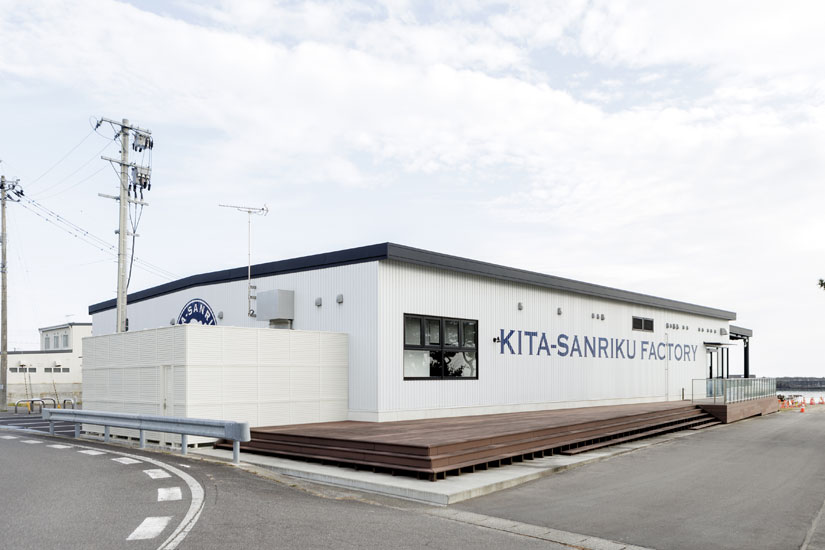
Yukinori Shimojotsubo, CEO of Kita Sanriku Factory, was born and raised in Taneichi, Hirono Town, in a family that has been in the fishing industry for generations. When he was in elementary school, he remembers diving into the sea and seeing a forest of kelp and sea urchins feeding on the kelp. Fisheries resources were so abundant that the town was vibrant. However, in the 1990s, the local fishing industry declined due to the unstable supply of raw materials for marine products and the sluggish consumption of marine products in Japan, and his father’s company began to fall into decline. He was a junior high school student at the time, but felt that he could no longer make a living in the fishing industry, so he graduated from college and became a salesman for a car sales company.
He worked in Tokyo, Sendai, Morioka, and other locations while changing jobs, but his father’s illness brought him back to his hometown in 2009. He remembered the days when the sea was abundant and the town was bustling with activity, and in 2010 he founded Hironoya, a seafood processing and sales company, with the hope of “making the town vibrant again with my own hands, just as it was back then. He then launched the brand “Kita Sanriku Factory” and incorporated it in 2018.
Aiming to increase the value of sea urchin produced in Hirono Town
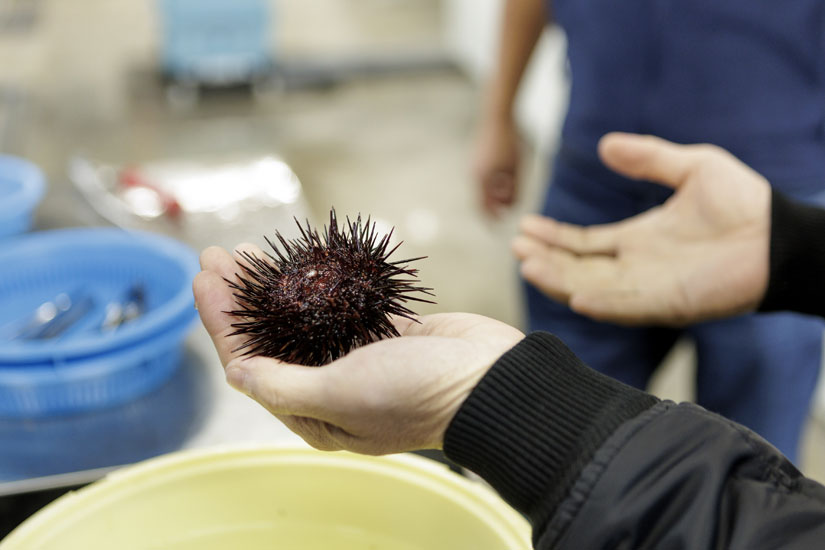
Mr. Shimojitsubo focused on sea urchin as the core of his business. The type of sea urchin produced in Hirono Town is the Kitamura-Saki sea urchin. Harvested from spring to summer, it not only has a large catch, but also has a good taste. However, since they are distributed in the market as “Sanriku-grown” along with sea urchins from other regions, they wanted to somehow establish the “Hirono-cho” brand and increase the value of the sea urchins.
Uni Farm” lands natural sea urchins for the fourth year
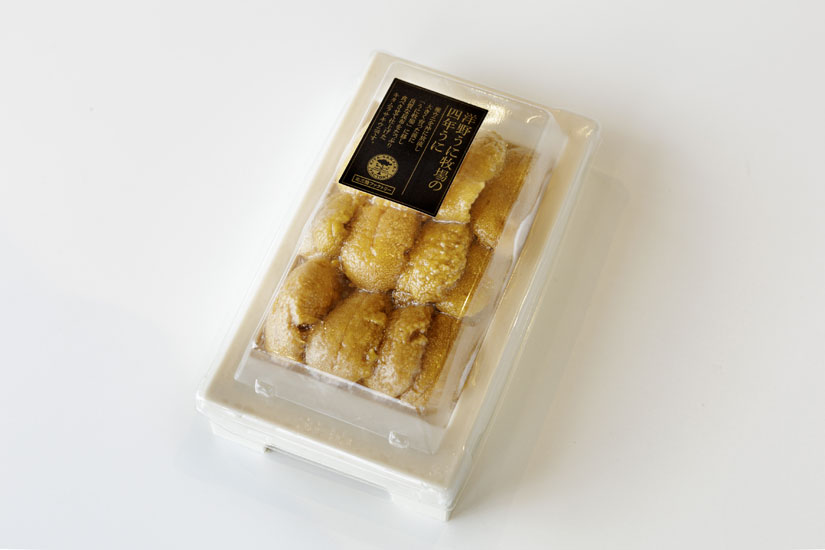
There is a unique reason for the deliciousness of sea urchins in Hirono Town. The town’s 178 “propagation trenches,” which were artificially created on the coast about 60 years ago, are the reason why sea urchins are so tasty. The sea in Hirono is shallow, and at low tide, the seawater dries up and the seaweed dies, so the local fishermen’s cooperative built these grooves as a “seaweed bed” where the seaweed can grow. Thanks to this, even at low tide, sea urchins are able to feed on natural seaweed in the propagation trenches. According to Mr. Shimojitsubo, “The taste of sea urchins is determined by their food, and natural kelp is the best,” which is why the sea urchins in Hirono Town have such a rich flavor.
However, not all sea urchins living in the sea in Hirono Town are able to enter the propagation trench, and if too many sea urchins enter the trench at one time, they will compete with each other for seaweed. Therefore, the fishermen of Yono-cho have used their experience and wisdom accumulated over many years to manage the growth of sea urchins and create a system that allows them to be shipped in the “four-year” period when they are most delicious.
Specifically, after the young sea urchins are hatched and raised for one year at the prefectural “Sea Urchin Cultivation and Fishery Center” located near the Taneichi fishing port, they are released into the open sea for two years, and then transferred to a propagation trench where they are raised for one year before shipment. The sea urchins are fed a steady diet of natural kelp that thrives in the propagation trench for a year before shipping, resulting in a sea urchin with a strong flavor and good filling. Mr. Shimojitsubo has further branded the propagation channels as “Sea Urchin Farm®” and the peeled raw sea urchins as “Four-Year Sea Urchin from the Yono Sea Urchin Farm®”. The brand is sold from the end of April to mid-August, along with raw sea urchins in the shell, and has been highly acclaimed, especially by restaurants. The general method of sea urchin cultivation is to grow sea urchins on land or in a facility on the sea by feeding them special food.
Regenerative cultivation” of emaciated sea urchins by feeding them a unique bait
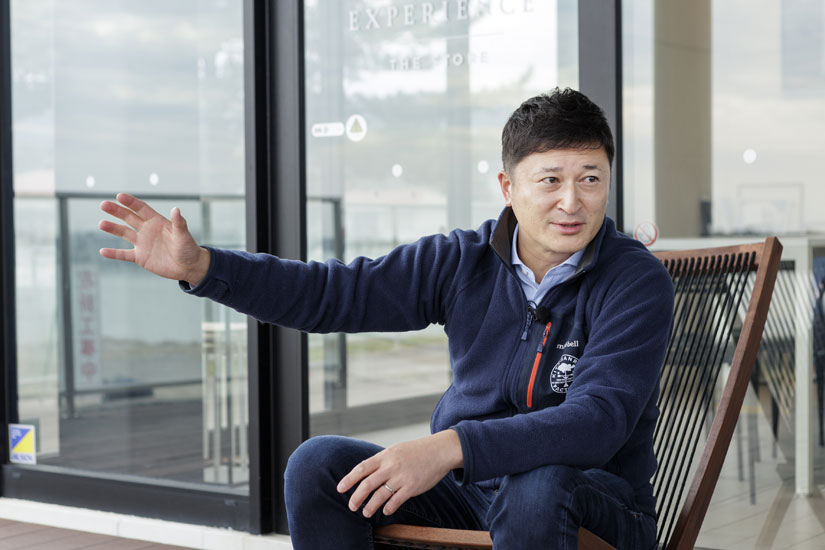
Along with the branding of natural sea urchins from Hirono Town, Mr. Shimojotsubo has also been involved in the “regenerative aquaculture” of sea urchins that are almost completely devoid of meat due to the effects of rocky seabed burns.
Isoyake,” a desert-like condition where seaweed does not grow on the seafloor, and the resulting decrease in landings of marine products, have become a problem in many parts of Japan, including Hirono Town, and one of the major causes is said to be the overgrowth of seaweed-eating sea urchins. One of the main reasons for this is said to be the overpopulation of seaweed-eating sea urchins, which have a strong reproductive capacity and are omnivorous, so they continue to live even when there is no more seaweed. Moreover, they become more active when the sea water temperature rises, so they are proliferating rapidly due to the recent rise in sea water temperature caused by global warming. However, sea urchins that continue to live in the seawater are of no commercial value because they contain almost no flesh, so they must be discarded at a disposal fee, and the amount of sea urchins that can be shipped as products will only decrease. When consulted by fishermen at ……, Mr. Shimojitsubo decided to feed the emaciated sea urchins with artificial bait to “regenerate” them into sea urchins filled with delicious flesh. He asked Associate Professor Hiroshi Urawa of Hokkaido University’s Faculty of Fisheries, who had been researching sea urchin aquaculture technology, to teach him how to do it, and he set about researching and developing bait and sea surface cultivation methods.
The development was more difficult than I had imagined,” he said. The sea urchin meat was packed tightly and had a beautiful color, but the key was that it did not taste good,” said Mr. Shimojitsubo. Nevertheless, after eight years of trial and error, they finally succeeded in “regenerative aquaculture” of sea urchins with a taste similar to that of natural sea urchins. Specifically, he developed a special cage in which to keep the sea urchins and a bait mixed with natural seaweed pomace. This sea urchin, named “Hagukumu Uni,” has attracted attention not only for its taste and filling, but also for the fact that it can be shipped year-round.
Mr. Shimojitsubo then established a local subsidiary in Australia in 2023, hoping to use the sea urchin’s regenerative aquaculture system to improve the world’s seashores and achieve the company’s mission “from Kita Sanriku, to enrich the world’s oceans. The company is now engaged in aquaculture from two bases in Australia and Japan.
Aiming to export to Europe after receiving EU HACCP certification
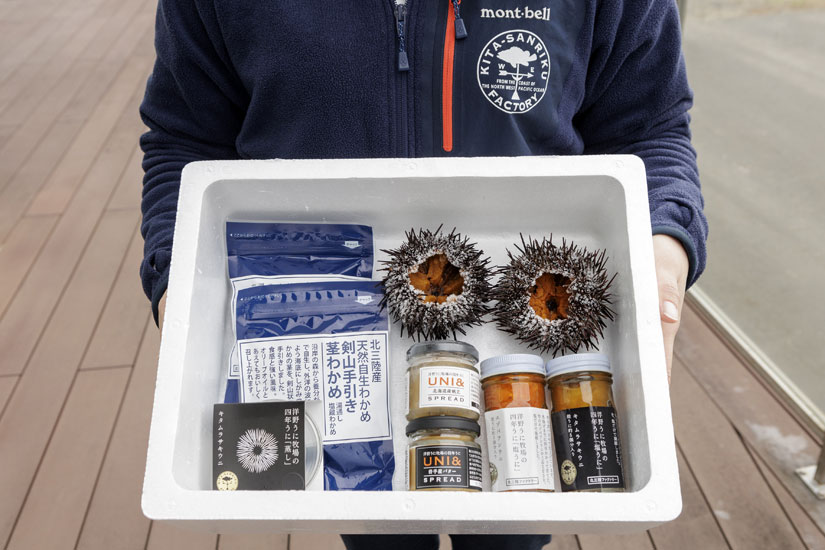
Unfortunately, it will take time to completely exterminate the overgrowth of sea urchins and return the sea to a state where seaweed can thrive. In fact, as mentioned above, the amount of sea urchin landings has been decreasing year by year due to rocky shore scorching, and in 2024 it was down 60%. In addition, the amount of sea urchins for sea farming is also becoming unstable due to the continuing rise in sea water temperature.
Therefore, Mr. Shimojitsubo is promoting the development of land-based aquaculture facilities in the town. Fresh seawater drawn from offshore Maehama is drawn into a fishpond on land, and the temperature is controlled while the water is poured over the fishpond, where poor-fleshed sea urchins are re-cultured. The majority of the sea urchins handled by the company are currently natural, but the company expects that more sea urchins will be cultured once the facility is operational.
The company is also eyeing overseas markets. In December 2024, the company’s main factory became the first sea urchin factory in Japan to receive EU HACCP certification. Taking this opportunity, the company is looking to export processed products and frozen cultured sea urchins to Europe. According to Mr. Shimojitsubo, price competition in the domestic market for sea urchin is becoming tougher every year due to the entry of foreign products into the Japanese market, and it is essential for the survival of the business to have its products highly evaluated on a global level. Fortunately, the popularity of sea urchins is increasing overseas, and he hopes to establish the Yono’s sea urchin brand in Europe first. Believing that this will one day lead to the revival of the town of Hirono, Mr. Shimojitsubo continues to travel around the world today.
